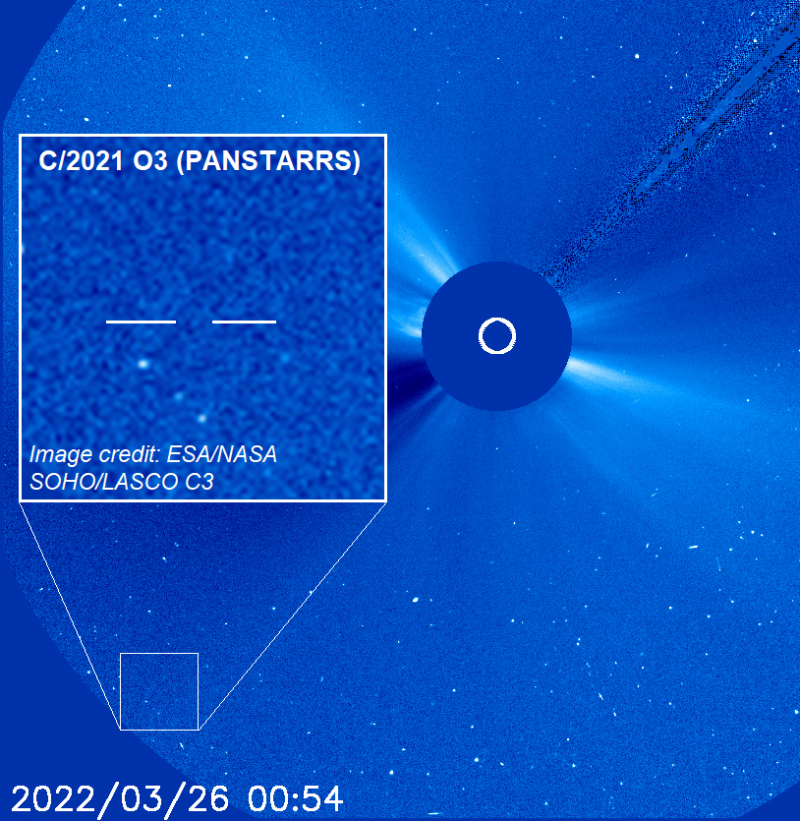
News flash! And darn! Comet C/2021 O3 PanSTARRS has disintegrated
Predicting the fate of a comet
Picture this. Astronomers discover a new long-period comet coming into the inner solar system. They calculate an orbit and learn the new comet will pass close to our sun, within the orbit of the innermost planet, Mercury. All signs point to a prediction that – after its perihelion, or closest point to the sun – the comet will get bright, at least bright enough to be visible in binoculars. But will the comet survive its passage around the sun? How can we know?
We can’t know for sure. But in July 1991, American amateur astronomer John Bortle gave us a model that helps predict whether a comet will survive its perihelion passage. It’s come to be known as the Bortle survival limit for comets and remains a profoundly useful tool for those who study comets, and for those who want to catch a glimpse of these elusive visitors from deep space. Read about the model below.
News flash! And darn! Comet C/2021 O3 PanSTARRS has disintegrated Did comet C/2021 O3 PanSTARRS conform to Bortle’s model? More about that below, too.
What John Bortle did
Bortle looked at 85 comets discovered between 1800 and 1989. All came within 0.5 astronomical units (AU) of the sun. That is, they came within about half Earth’s distance from the sun, or less. Four were short-period comets, orbiting the sun in 200 years or less. The other 81 comets were long-period comets, taking more than 200 years to go around the sun.
Of those 85 comets, he noted the outcome of each. Sixteen disintegrated as they rounded the sun. Another six comets survived perihelion, but became unstable; most dimmed considerably. The remaining comets survived perihelion.
Then, Bortle examined the absolute magnitude of each comet. Absolute magnitude is a measure of the comet’s true brightness (in this case, how bright it would be if it were one AU from both the Earth and the sun).
Bortle discovered a correlation between a comet’s absolute magnitude (brightness at 1 AU) and perihelion distance (closest point to the sun). He found that intrinsically fainter comets don’t survive a close passage near the sun. A brighter comet might survive at that perihelion distance. But a faint comet – at that same distance from the sun – will disintegrate.

The Bortle survival limit
Bortle derived a formula for this. If the comet was brighter than this calculated magnitude it was likely to survive. If it was fainter than the calculated magnitude, there was at least a 70% chance that it would not survive perihelion.
The formula is this: In order to survive perihelion, the absolute magnitude must be brighter than 7.0 + 6 times the perihelion distance.
In astronomical terms that is:
H10 = 7.0 + 6q, where H10 is the absolute magnitude and q is the perihelion distance in astronomical units.
This is known as the Bortle survival limit, or just the Bortle limit. Don’t confuse it with the better-known Bortle Scale, used widely by amateur astronomers to gauge the night sky darkness.
Sungrazers and periodic comets
Sungrazing comets – those coming exceedingly close to the sun without actually striking the sun – aren’t in the same category as the comets John Bortle studied. Many smaller sungrazing comets do disintegrate. And the larger ones tend to break into pieces and return in a few hundred years.
John Bortle also discovered that short-period comets behave differently from long-period comets. They can fall well below the Bortle survival limit, yet still survive.
Update to Bortle’s formula
In 2019, Zdenek Sekanina, a research scientist at NASA’s Jet Propulsion Lab in Pasadena, California, updated and refined Bortle’s formula. He pointed out that Bortle – although he’d used the best available data for the comets between 1801 and 1989 – didn’t have access to the kinds of high-quality comet orbital calculations now available to astronomers.
Sekanina then examined comets discovered between the years 2000 and 2017. His May 2019 study can be found here. He ended up with 48 comets with high-quality orbits and perihelion distances of 1.0 AU or less. The orbits of these comets were so well-determined that they could be divided into three classes.
– Twenty were Oort Cloud comets, originating far away. Most likely had never visited near the sun before. Sekanina discovered that half of the Oort Cloud comets survived perihelion. The other half failed, more than what would be expected based on the Bortle survival limit.
– Five comets had orbital periods of 150,000 to 1,000,000 years. Four of the five survived their perihelion passage.
– And 23 comets had orbital periods of 2,000 to 50,000 years. These comets have likely been to the inner solar system before. Twenty of the 23 comets survived perihelion, more than what had been predicted by the Bortle survival limit.
The conclusion of the study is that the origination of the comets also has something to do with the survival probability, with new comets failing at a higher rate than old comets.

Don’t stress my nucleus!
Why would first-time comets be more likely to disintegrate than comets that have already rounded the sun one or more times?
The answer appears to lie within the nuclei, or cores, of Oort Cloud comets. They differ dramatically in their behavior near the sun from other long-period comets. Oort Cloud comets may begin to disintegrate several weeks before perihelion. They may have a sudden loss of nuclear condensation usually, but not always, after a brief flare-up. And Oort Cloud comets are known to be poor dust producers.
As these comets approach perihelion, the heat from the sun leads to the sublimation of ices. In other words, ice in the comet goes from a solid to a gas, without passing through a liquid state. And this sublimation process absorbs the heat and prevents the comet’s nucleus surface from heating up. As the comet nears about 1 AU from the sun, the comet begins to run out of ice, and its brightness trend decreases and might even stall. The increasing solar heat now begins to stress the nucleus, with thermal expansion and thermal stress. This causes a breakup of the nucleus.
A comet with a lot of dust is better suited to survive this ordeal than one that is dust poor. And, as mentioned above, most Oort comets are dust-poor.
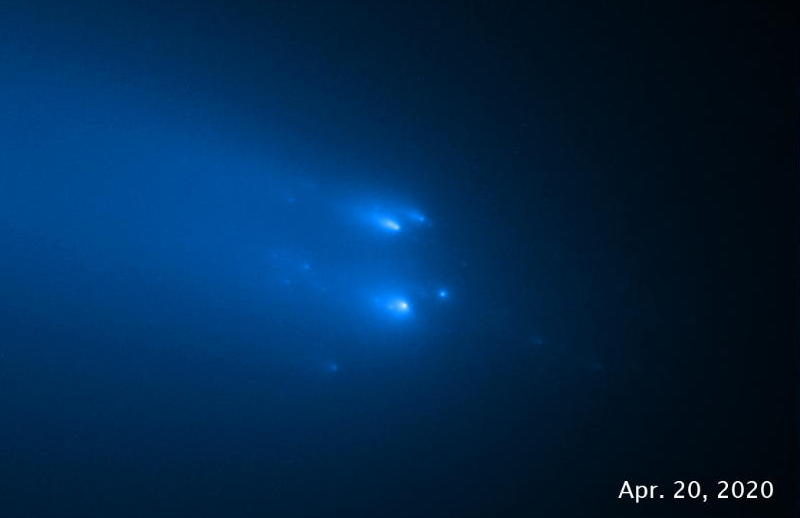
A look at recent comet failures
Before Comet C/2020 F3 (NEOWISE) graced our sky in the summer of 2020, there were two other comets that year that were expected to become very bright. Both failed.
One was Comet C/2019 Y4 (ATLAS), which was discovered on December 28, 2019, and was expected to become a very bright comet. But its absolute magnitude (9.7) was fainter than the Bortle Survival Limit (8.5). With an orbital period of 4,800 years, it has been here before. It brightened rapidly in early March 2020, then the rate of brightening decreased. It began to disintegrate on March 22, 2020. This seems to be due to it the rapid outgassing causing the nucleus to speed up its spin rate until it fell apart. The Hubble Space Telescope image shows the many fragments.
Then came Comet C/2020 F8 (SWAN), discovered on March 25, 2020. It too was expected to become a bright comet. Originating from the Oort Cloud, this comet was expected to pass perihelion on May 27, 2020, at 0.43 AU. The Bortle Survival Limit is 9.6, but this comet was about 8.5, bright enough to survive. Working against it is that it is an Oort Cloud comet. In early May, at about 0.7 AU from the sun, it disintegrated. Being an Oort Cloud comet racing towards the sun, it seems to have suffered the same fate as the one Sekanina described above. It ran out of ice, and this stressed the nucleus.
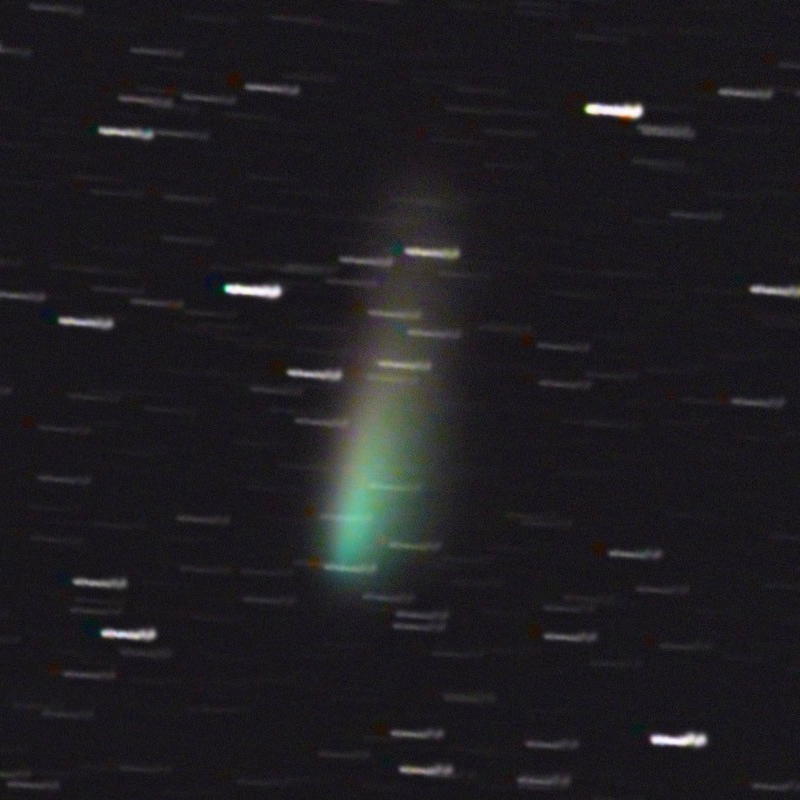
Comet C/2021 A1 (Leonard) disintegrated two months after perihelion. It was not an Oort Cloud comet, but it has been 80,000 years since it was here. It now appears the nucleus was breaking apart weeks earlier. It was bright enough to survive the Bortle Survival Limit, but other factors, perhaps a speed-up of rotation or its passage by Venus in mid-December stressed the nucleus.
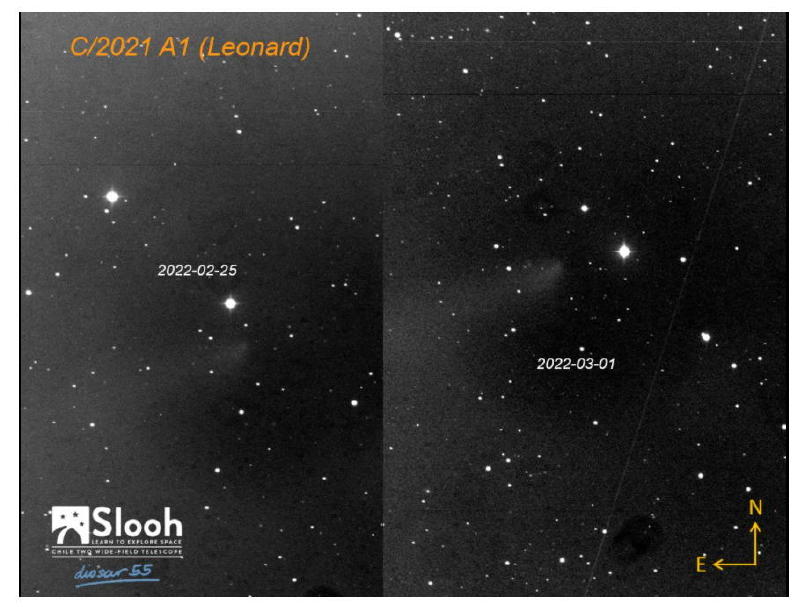
Comet ISON (C/2012 S1) was an Oort Cloud comet that had a very short perihelion distance on November 28, 2013, at 0.012 AU. There were two factors going against its survivability: it was from the Oort Cloud and its absolute magnitude was slightly fainter than the Bortle Survival Limit. It disintegrated as it rounded the sun.
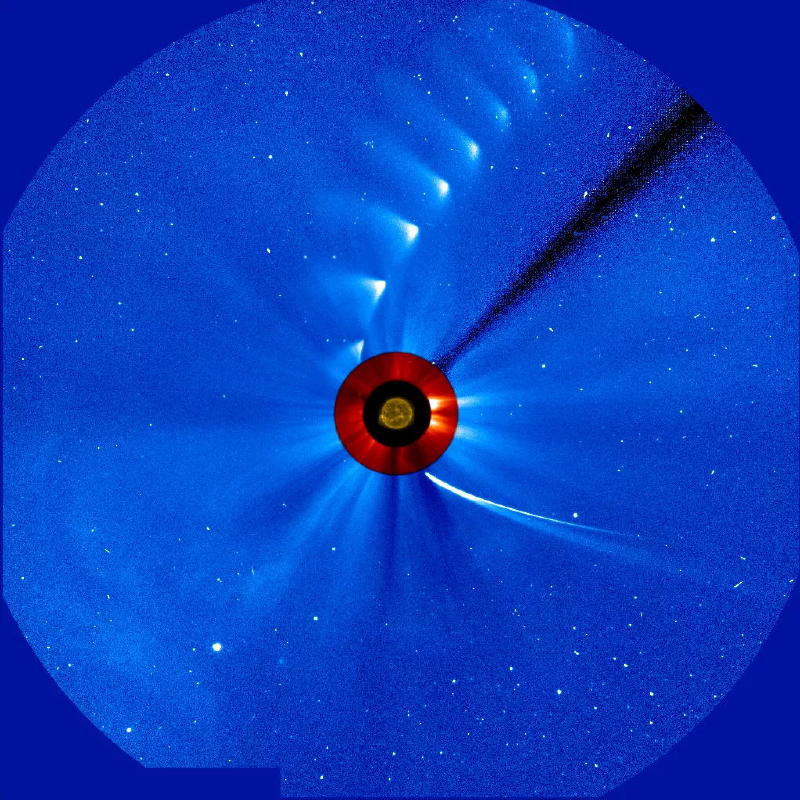
Comet C/2010 X1 (Elenin) in 2011 also disintegrated after it passed nearest the sun at perihelion.
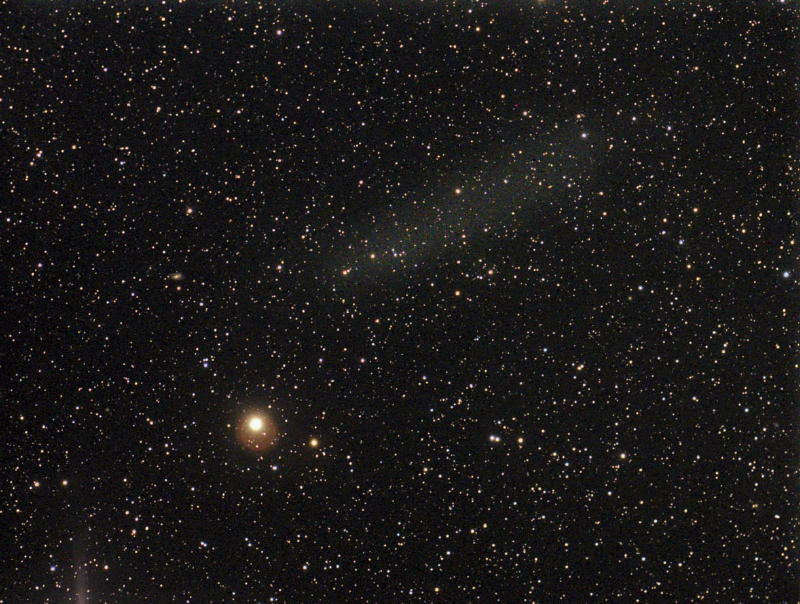
Did C/2021 O3 (PanSTARRS) conform to Bortle’s model?
Comet C/2021 O3 (PanSTARRS) was the most anticiapted comet of 2022 so far. After its April perihelion, it was hoped the comet would brighten to binocular visibility. Instead, it disintegrated at its perihelion passage. Did this comet conform to Bortle’s model? Like Comet ISON, C/2021 O3 (PanSTARRS) came from the Oort Cloud. Its absolute magnitude was 10.0 … fainter than that required by the Bortle survival limit (8.7).
So, yes – to the dismay of skywatchers around the globe – it conformed to the model and is now gone!
Bottom Line: Astronomers learn even from failed comets. The Bortle survival limit gives us a prediction as to whether a comet will survive perihelion.
The post The Bortle survival limit for comets first appeared on EarthSky.
0 Commentaires